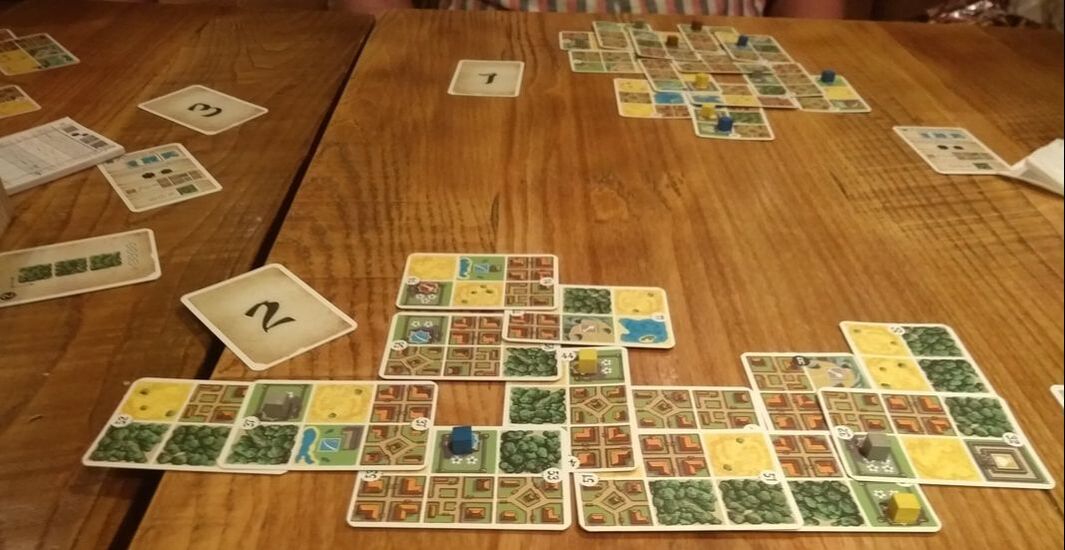|
16th July 2019 It's a Tuesday and the 3rd and final game of game evening at 'The Sovereigns' in Woking is 'Honshu'. Wikipedia describes Honshu as 'the largest and most populous main island of Japan'. Honshu the game describes itself as a 'trick-taking, map building card game set in feudal Japan'. So, there you go! What's in a game?
How's it play?
The objective of Honshu is to lay down map cards to create your province. When laying a card, generally the objective is to lay cards in such a way that matching terrain types are next to each other. First thing though, is set up.
Trick-taking
Play continues for 3 turns. Then before the 4th turn, players pass their 3 remaining cards to the player to their left. Once the 6th turn is completed, the players will have run out of cards. 6 new cards are randomly dealt to each player and play continues. After the 9th turn has been completed, players pass their 3 remaining cards to the player on their right. After the 12th turn, the game is over and we go to scoring. Endgame So once the 12th turn is over, it's time to score. There are several different terrain types and each type scores differently.
Overall Honshu is a small game that packs a lot in. It has a trick-taking mechanic that can be exploited to good use if you're canny, as well a a drafting mechanic. Which is quite interesting. The map-laying phase gives the player quite a lot of flexibility when putting map cards down, so you get a lot of choices and decisions to make. Honshu reminds me a little bit of 'Isle of Skye', both games are broadly divided into a acquisition phase and a map laying phase. Both games give players options for strategies (And both games allow you take another player's map tile/card!). Honshu is a little simpler, but quicker to play. And like Isle of Skye, I think Honshu is a good game and definitely worth trying.
0 Comments
Leave a Reply. |
AuthorI play, I paint. Archives
March 2024
Categories
All
|


 RSS Feed
RSS Feed
